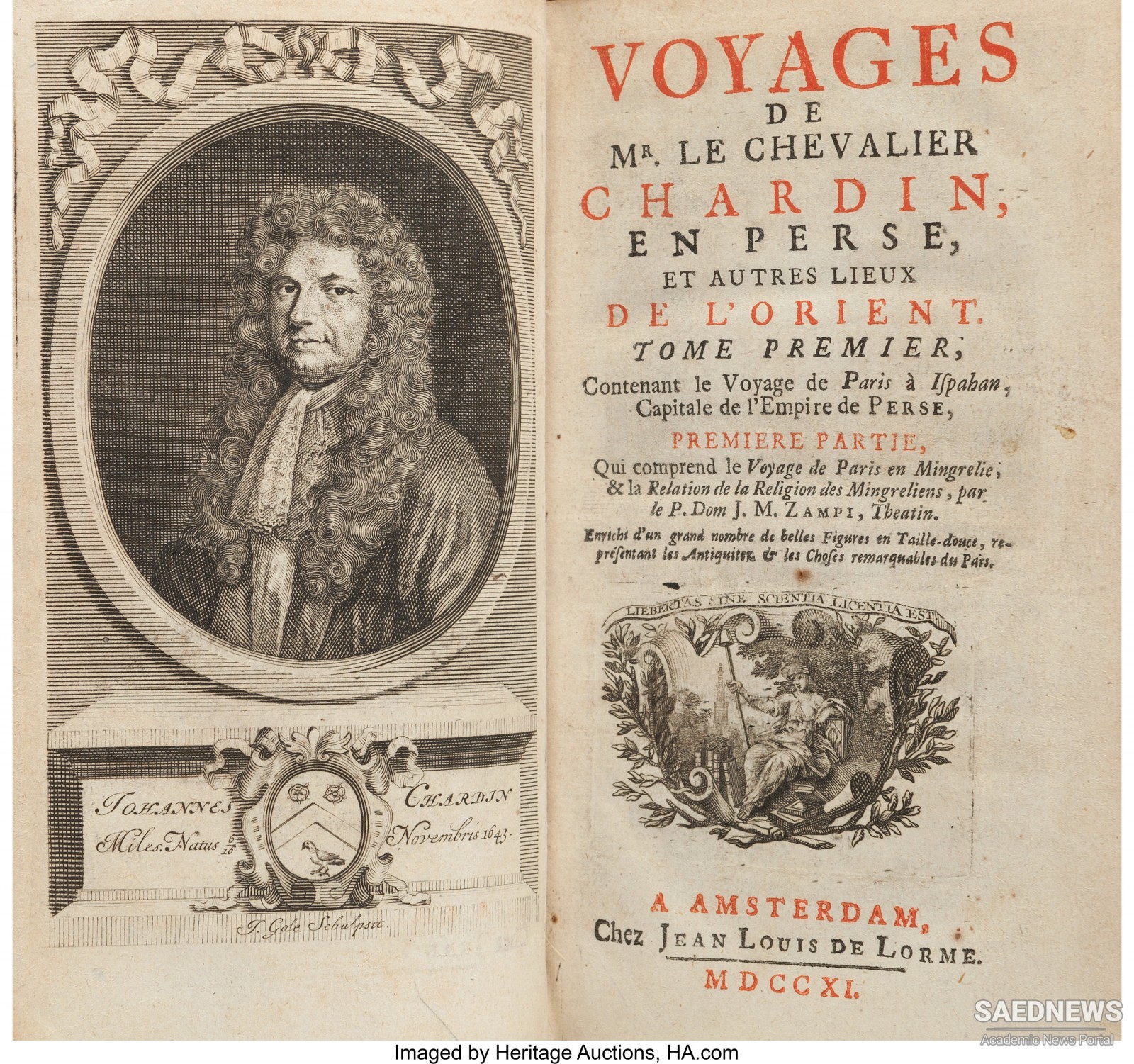They were a notable band, which included Pietro della Vallé the Italian (1616—23), followed a few years later by our erudite countryman Sir Thomas Herbert (1627—8). Tavernier, the French jeweller, travelled both in Persia and in India from 1629 to 1675, while Olearius was Secretary to a Mission despatched by the Duke of Holstein, which reached Persia in 1637 and spent a year in the country.
Chardin, greatest of them all, was born in Paris in 1643, the son of a wealthy jeweller of the Place Dauphiné. He felt the call of the East as a young man and, in 1664, he started on a journey to the East Indies, accompanied by a Monsieur Raisin of Lyons. Travelling by Constantinople, the Black Sea, Georgia and Armenia, he reached Persia early in 1666, and resided in the country for about eighteen months, during which period he commenced his studies in Persian and Turkish. He was fortunate to be at Isfahan when Abbas II died in the autumn of 1666. His eldest son, Prince Safi, had been immured in the harem, in accordance with the custom of the dynasty, and there was a widespread report that he had offended his father and been blinded.
When the death of the Shah was reported secretly to the high officials of the Court, they met together to elect his successor. Swayed by their personal ambitions, they decided to accept the rumour that the heir had been blinded and was consequently incapacitated from ascending the throne, and elected his younger brother, a boy of eight, “a Prince whose blooming virtues promised something more than ordinary.” But their plot to hold the reins of government during a long minority was defeated by a faithful eunuch testifying to the eyesight of the heir being intact and, after some hesitation, he was summoned to the throne. Informed of the change in his fortunes, he was brought out of the harem, and was immediately crowned. So promptly was the action taken that the citizens of Isfahan were awakened by music played in the palace at midnight to announce the coronation of the new Shah, before they were aware that Abbas II was dead.
This was the theme of Chardin’s first work, which he termed The Coronation of Soleiman III. With regard to this title, Shah Safi, as he was crowned, was constantly ill, mainly owing to excessive drinking and other excesses. His cunning physician, unable to remedy this unsatisfactory state of affairs, and fearing for his own safety, attributed the monarch’s ill-health to the fact of his coronation having taken place at an inauspicious hour. This view was accepted by the superstitious Persians, and the young monarch was crowned a second time, assuming the title of Soleiman III.
Apart from its considerable historical value, Chardin’s first work affords a remarkable insight into Persian mentality, that is entirely new in the European writings of the period, being, in fact, the inside view. Chardin visited India in 1667, but returned to Persia in the spring of 1669, and left for Europe with “Letters Patents” from the Shah who “gave me in charge the making of several Jewels of a great value, of which his Majesty design’d the Models with his own Hands.” The intrepid traveller reached Paris in 1670, and thereby successfully concluded his first journey.


 Revolutionization of Musical Education: Solfège and Modern Rhythmic Techniques in Persia
Revolutionization of Musical Education: Solfège and Modern Rhythmic Techniques in Persia














































